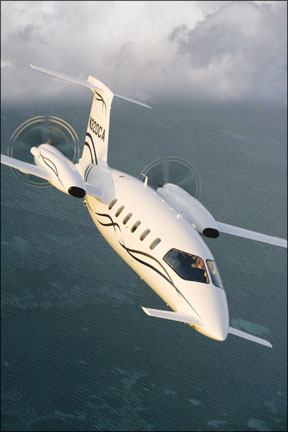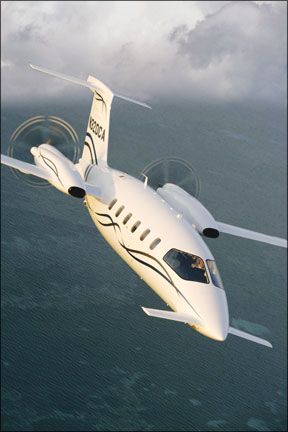The trickle-down effect of installation of glass cockpits in increasingly modest airplanes has changed the type of checkout a pilot gets when seeking to rent a machine from the local FBO. Because presentation of attitude, altitude and speed of the airplane, along with health of its various systems, has changed so dramatically from round-gauge airplanes, there has to be a fair amount of time spent with an instructor on the ins and outs of the video screens. This is a very

288
good thing, if for no other reason than getting a firm introduction to the avionics of an airplane before launching into the blue unknown may prevent a few pilots from killing themselves.
One hopes the days of “Hey, its an airplane, lead me to it and Ill fly it” soon will fade into aviation legend, along with their associated accidents. The good news is that the newer, more technically advanced airplanes tend to have fewer secret corners in either their systems or their handling as certification rules have become more sophisticated. While some bemoan the increasingly “vanilla” flavor of handling and systems in newly certified airplanes, its hard not to appreciate that they tend to have fewer little secrets that will kill the uneducated. However, the reality is that most pilots are still flying airplanes acquiring senior citizen status-the airplanes, I mean-and failure to spend time learning the details of a particular type prior to flying it can prove embarrassing at the very least.
Fuel Systems
The pilot who learned to fly in a Cessna 150 or 152 experienced the simplest of fuel systems: There is no tank selection, the fuel is either on or off. He or she soloed, made a number of cross-country flights and generally operated the airplane on the happy principle that so long as there was usable fuel in the tanks it would flow to the engine without further effort or attention. That training also meant the pilot would have to acquire new habit patterns when moving to an airplane in which it was possible or necessary to select a tank. Since there have been many forced landings with the fuel selector on a dry tank while another one contained adequate fuel, history tells us not all pilots successfully developed the needed habit patterns.
The lesson is that despite certification-driven conformity in systems among newer airplanes, each type is an individual to be respected, its uniqueness ignored at a pilots peril. Newer singles generally have no more than two fuel tanks from which to choose, yet even that situation leads to unintended landings. As one looks at slightly older models still in regular use and starts to observe fuel systems, a wide range of extremes in user friendliness is readily observed. Some would make Rube Goldberg envious; it is not terribly uncommon to find four tanks in a single-engine airplane; some have six. Aftermarket mods can add to the excitement: Often fuel has to be transferred via a pump to one of the factory-installed tanks before the engine can burn it. Frustratingly, the transfer process may or may not work as fast as the engine demands fuel. Thus, its wise to know all about the transfer process, including where the fuel is going, whether fuel has to be used out of the target tank prior to transferring aux tank fuel into it (to avoid pumping fuel overboard) and the rate at which the transfer takes place.
As if that werent enough, adding to the joys of fuel system operation is you may have to consider whether the fuel gauges show each tanks quantity. While a gauge for each tank sounds like a no-brainer, it is not always the case. Some older airplanes have but one gauge: You have to move a separate selector to display the quantity in a given tank. After doing so, the gauge may not show fuel in the tank supplying the engine. In case youre wondering: Yes, that “feature” has led to more than one crash.
A fair number of twins have two fuel gauges-but they only indicate the fuel in the tanks feeding the engines. Instead, the pilot has to move a switch to read the quantity in the other tanks. And, due to certification requirements, in some cases there is no gauge for a fuel tank that does not directly feed fuel to the engine (its fuel must first be transferred to another tank). “Umm, lets see, did I have fuel in that tank before we took off? Did I already transfer it?”
By and large, fuel systems rarely fail; so long as the pilot orients the selector(s) in the correct manner and there is fuel aboard, fuel will flow to the engine. Yet, fuel-related events are the most common system-related accidents in single-engine airplanes simply because the pilot did not work the system correctly. When it comes to the other major systems, such as electrical and hydraulic, the problem a pilot faces is not so much how to make those systems work properly, but what to do when something goes wrong.
Handling
There are the handling quirks that can range from of mild interest to expletive not deleted. There are the little things such as the recommendation against slips with full flaps in some models of the Cessna 172. (The reason is a minor disruption of airflow over the elevators in a maximum effort slip, and the result is a small bobbing or tugging on the control wheel. However, it is different, and inexperienced pilots running across it for the first time have been known to get excited.)
Then there are big things, such as the stall behavior of airplanes lacking camber in the tail surfaces (Piper Cub, Aeronca Champ, etc.) when the ball is not centered at the stall break. The airplane rolls quickly and pitches down sharply. While recovery is completely conventional and simply involves applying forward stick, centering the ball and recovering from the dive, there is usually an altitude loss of several hundred feet. When maneuvering at low altitude, a cross-control stall in one of these airplanes can be a killer, so much so that it long ago earned the title of “moose stall” (in honor of all of the late Alaskan pilots who hit the ground after a cross-control stall when flying at low altitude to eyeball wildlife).
When learning a new (to the pilot) airplane, one of the most powerful early impressions is control responsiveness compared to what you have flown before. It can vary quite dramatically. For example, the Piper Cherokee series and Cessna 172 have relatively slow control response at landing approach speeds. The manufacturers really got control response about right on those airplanes, even for the worst of pilots. The companion to the lowest common denominator handling design is that it can bore the heck out of the better pilot who wants more responsive controls and can handle them.
Given the range of control responsiveness in general aviation airplanes, how does a pilot learn the handling and behavior of a new airplane? Take some time at altitude exploring slow flight and stalls for yourself. Dont take someones word for how the airplane behaves. Slow it down to five knots above the clean stall speed, flaps up, set power to hold altitude, trim it and fly it (keep an eye on cylinder head temperatures). How does it respond to control inputs? Next, dirty up, reset power and trim to fly level at five knots above the landing configuration stall speed (the stall warning horn should be on steadily) and do the same thing. Give yourself time to get to know the airplanes behavior when it is slow, find out how effective the ailerons are, how the elevator and rudders respond, and then make a go around from that configuration.
See for yourself what trim changes are involved, how fast the flaps retract and whats needed to keep the ball centered. Set up a power-off glide, with full flaps, at approach speed. Slip the airplane with full aileron and rudder input: Do you run out of aileron or rudder first? Knowing the answer will help you make decisions about what sort of crosswind you want to deal with on landing. Then, center the ball and go to full power, and make a go around. Which way does the airplane pitch with power application? Some will pitch up radically, needing significant forward yoke and retrimming; others pitch down. Find out what it does so that you are ready for it when near the ground and things matter.
Do some power-off stalls clean and with full flaps, and dont hurry the recovery. See how honest the airplane is at the break. Do a couple of full power stalls with the flaps in takeoff position and the gear down. What warning does it give? What does it take to keep the ball centered? How far must you lower the nose to fly out of the stall? Thats something especially good to know if you do stall it a few hundred feet up after takeoff and want to recover with the least altitude loss.
Where the Answers Are
Sure its prosaic, but the first part of any process of getting to know a new-to-you airplane is to read its POH. Get to know the normal and emergency procedures well, make note of the pertinent operating speeds, resolve to fly the airplane on-speed during takeoff, climb and landing approach, and later, while flying the airplane on-speed, form your own opinions about its handling. The second phase is to do the checkout with an instructor who knows the airplane and can accurately brief you about it. Then, reading and briefing complete, and with an open mind, go fly the airplane.
And, finally, as Ive watched so many of the pilots who fly different models of warbirds do prior to a flight, insist on a few minutes of quiet time before startup. This lets you focus on this particular airplane and this particular flight. Do so, and youll reduce the likelihood of ever getting an unwanted surprise in an airplane.
Rick Durden is a practicing aviation attorney and type-rated ATP/CFI with more than 7000 hours.




